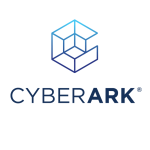I use Red Hat in data routines for web, database, and container servers. Right now, I'm using three primary use cases.



I use Red Hat in data routines for web, database, and container servers. Right now, I'm using three primary use cases.
Red Hat offers compliance consulting services. If we purchase hardware from companies like HP, Dell, or IBM, which also partner with Red Hat, they often guarantee compliance for their hardware. This compliance can extend to security regulations imposed by certain countries or governments, such as those based on NIST or CSSP standards. Red Hat's focus on compliance seems to center primarily around these hardware-related aspects and associated security requirements.
Red Hat's knowledge base requires an active subscription for full access, but developers can utilize a free, annually renewable option. With an activated developer subscription, users gain access to forums, documentation, the latest news, vulnerability reports, and other resources related to Red Hat Enterprise Linux and its associated packages. The knowledge base is now well-documented, and the active community quickly responds to forum inquiries, often within a few hours.
Leap is a feature designed by Red Hat to migrate its operating systems between versions. Introduced to address the end-of-life issue for distributions like CentOS seven, eight, and RHEL seven, eight, Leap allows users to upgrade from RHEL seven to eight, RHEL eight to nine, CentOS seven to eight, and CentOS eight to nine. However, Leap is specifically designed for Red Hat and works optimally only on Red Hat seven, eight, and nine. It does not function as intended on CentOS, Fedora, Oracle Linux, or other community distributions. Red Hat Insights is a complementary tool that provides valuable information to subscription holders about their licensed servers, including package installations, subscription validation, detected bugs, and vulnerabilities. It also offers alerts about new vulnerabilities and patches and facilitates license management and environment oversight.
I've used Convert2RHEL, a tool that simplifies transitioning from CentOS-based distributions like Leap to Red Hat Enterprise Linux. It supports converting only CentOS to RHEL by replacing binaries and installing Red Hat logos. Underlying Ansible scripts entirely handle this process. While I've had success with it, occasional minor issues arise but are easily resolved.
I have experienced minimal downtime while using RHEL. Some of our RHEL systems have operated uninterrupted for over 600 days. The only necessary reboots occur when applying kernel updates. Overall, RHEL has demonstrated reliable and resilient uptime and security.
Due to its built-in compliance features, RHEL is instrumental in achieving certifications for security standards. The system incorporates policies that align with regulations for governance and public institutions. When installing Red Hat Enterprise Linux in the cloud or on-premises, users must implement security policies that activate specific plugins and APIs to maintain compliance. Given its comprehensive coverage of contemporary compliance standards, Red Hat is the most valuable distribution.
Release updates are the most valued feature because Red Hat's rigorously tested release update pipeline sets it apart from other distributions. While many options are available, none match Red Hat's commitment to thorough package testing. Packages are initially delivered to Fedora, Red Hat's community distribution, for testing and validation. Proven packages then transition to CentOS, and after six months, the most stable and reliable packages are incorporated into the new Red Hat release. This well-defined pipeline ensures that Red Hat packages are stable and long-lasting. However, not all packages released in Fedora make it to Red Hat; some experimental or community-driven packages may not meet enterprise standards. Fedora serves as a testing ground, while Red Hat focuses on delivering a stable operational system.
Red Hat, known for its secure distribution, sometimes delays critical security patches for certain packages compared to other Linux communities like AlmaLinux or Rocky Linux. For instance, AlmaLinux addressed recent vulnerabilities in the SSH package within days, while Red Hat took over a week to release a patch. While Red Hat's rigorous testing ensures high-quality patches, the delay in releasing them can pose security risks.
Red Hat Enterprise Linux is a highly regarded but expensive distribution known for its top-notch software. This high cost often precludes smaller companies from adopting it. There is potential to make Red Hat Enterprise Linux more accessible to a wider range of businesses by lowering the price.
I have been using Red Hat Enterprise Linux for ten years.
I previously encountered instability with an assistant. While using a non-Red Hat graphical interface, KDE, I experienced a system crash following a kernel update. This desktop environment proved incompatible with the new kernel. Conversely, servers utilizing only the command line never suffered crashes or downtime. I've observed the opposite trend in my Red Hat infrastructure, demonstrating exceptional resilience. For instance, during a complete data center outage two or three years ago, Red Hat systems recovered within minutes, while Ubuntu servers required significant maintenance. This suggests that Red Hat offers greater stability and reliability in our environment.
Specific features such as path movement and load balancing must be enabled when running routes within a cluster. Pre-installed software simplifies the process for system administrators to implement smart clusters and scale servers. Among various distributions, Red Hat is considered the most proficient in these areas, excelling in scalability and cluster server management.
The deployment was challenging, not because of Red Enterprise Linux itself but because the application runs within this distribution. Certain legacy software required manual installation on this new system, which complicated the migration process. However, the operating system itself is straightforward and plug-and-play. The difficulties arose from configuring the necessary applications within the distribution. I've had no issues working with or migrating to this distribution.
Red Hat Enterprise Linux is only affordable for large organizations.
If I had to choose alternatives to RHEL, I would consider Oracle Linux and AlmaLinux. Oracle Linux is an enterprise distribution based on Red Hat, offering binary compatibility, meaning applications built for Red Hat Linux will run identically on Oracle Linux. It is an enterprise-grade product without the associated costs, as the distribution itself is free, with charges only for optional support. While I believe AlmaLinux is more resilient and reliable than RockyLinux, my preferred alternatives would be Oracle Linux first, followed by AlmaLinux.
I would rate Red Hat Enterprise Linux nine out of ten.
Cockpit is a technology offering a web-based console for server management. This web console can also perform any action achievable through the command line interface. However, I do not recommend it due to the inherent security risks of running a web server, especially when managing another web server. This introduces additional vulnerabilities and necessitates increased patching efforts. My preference is to maintain a minimalist system that runs only essential services. While Cockpit might be suitable for junior system administrators in the RHEL environment, as a senior administrator, I exclusively utilize the CLI, both on-premises via SSH and in cloud environments. I would only consider implementing Cockpit if we have junior staff and are willing to implement robust security measures such as firewalls, access control lists, and other protective strategies.

Hi,
We all know it's really hard to get good pricing and cost information.
Please share what you can so you can help your peers.

Please share with the community what you think needs improvement with Red Hat Enterprise Linux (RHEL).
What are its weaknesses? What would you like to see changed in a future version?

How do you or your organization use this solution?
Please share with us so that your peers can learn from your experiences.
Thank you!

If you were talking to someone whose organization is considering Red Hat Enterprise Linux (RHEL), what would you say?
How would you rate it and why? Any other tips or advice?

Please share with the community what you think needs improvement with OpenShift.
What are its weaknesses? What would you like to see changed in a future version?

Hi,
We all know it's really hard to get good pricing and cost information.
Please share what you can so you can help your peers.

If you were talking to someone whose organization is considering OpenShift, what would you say?
How would you rate it and why? Any other tips or advice?

How do you or your organization use this solution?
Please share with us so that your peers can learn from your experiences.
Thank you!

Hi,
We all know it's really hard to get good pricing and cost information.
Please share what you can so you can help your peers.

If you were talking to someone whose organization is considering Ansible, what would you say?
How would you rate it and why? Any other tips or advice?

Please share with the community what you think needs improvement with Ansible.
What are its weaknesses? What would you like to see changed in a future version?

How do you or your organization use this solution?
Please share with us so that your peers can learn from your experiences.
Thank you!

How do you or your organization use this solution?
Please share with us so that your peers can learn from your experiences.
Thank you!

Hi,
We all know it's really hard to get good pricing and cost information.
Please share what you can so you can help your peers.

If you were talking to someone whose organization is considering Red Hat Ceph Storage, what would you say?
How would you rate it and why? Any other tips or advice?

Please share with the community what you think needs improvement with Red Hat Ceph Storage.
What are its weaknesses? What would you like to see changed in a future version?

Please share with the community what you think needs improvement with JBoss.
What are its weaknesses? What would you like to see changed in a future version?

How do you or your organization use this solution?
Please share with us so that your peers can learn from your experiences.
Thank you!

If you were talking to someone whose organization is considering JBoss, what would you say?
How would you rate it and why? Any other tips or advice?



















